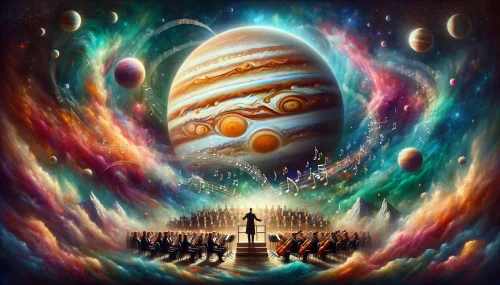Gustav Holst, an English composer with a flair for invoking vivid celestial imagery, remains best known for his orchestral suite The Planets. Composed between 1914 and 1917, this seven-movement suite paints an evocative soundscape that explores the astrological characteristics of the Solar System, excluding Earth and, due to its discovery after the suite’s composition, Pluto. Each movement of the suite is meticulously crafted to reflect the distinctive myths and astrological traits associated with its respective planet.
Among these movements, “Jupiter, the Bringer of Jollity,” stands out for its exuberant energy and grandeur, making it one of the most beloved in the suite. Holst’s “Jupiter” captures the planet’s association with joviality and regal magnificence through its robust orchestration and thematic richness. This piece, with its central, hymn-like melody—which later inspired the patriotic song “I Vow to Thee, My Country”—serves as a quintessential example of Holst’s ability to fuse melodic warmth with majestic orchestral colors.
In this analysis, we will delve deeply into “Jupiter” to understand how Holst employs various musical elements to craft a vivid portrayal of the planet. We will explore the orchestration to uncover how Holst uses the different sections of the orchestra to paint a sonic picture of jovial grandeur. We will examine the melody to see how thematic material contributes to the movement’s uplifting spirit.
The harmony will reveal the emotional depths of Jupiter through its complex and vibrant chord structures. Finally, the rhythm will be discussed to understand its role in driving the movement’s energetic and buoyant character. Together, these elements combine to make “Jupiter” not just a piece of music, but a powerful portrayal of the astrological spirit of the Bringer of Jollity.
Historical Context and Conceptual Overview
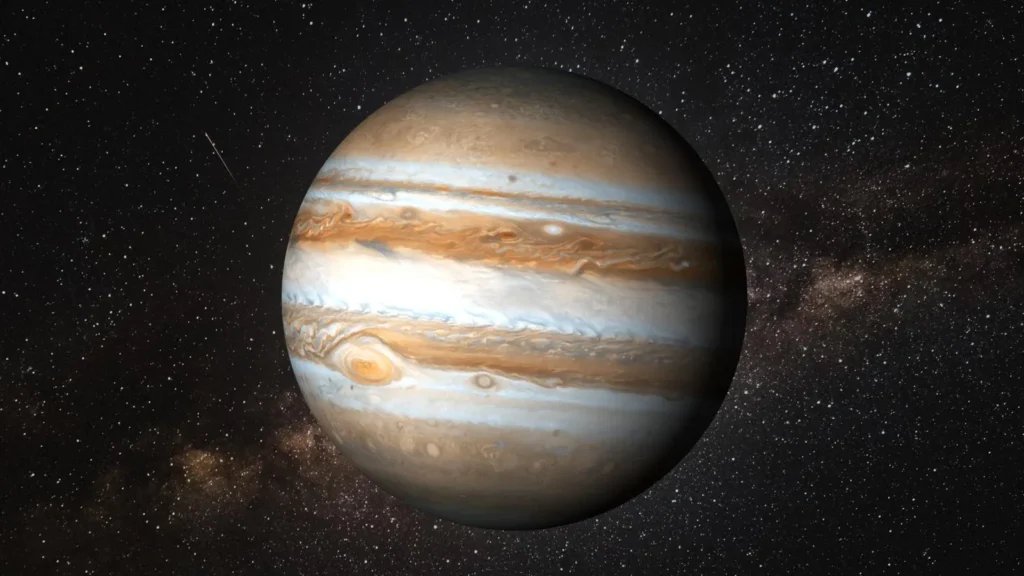
The Planets Suite by Gustav Holst represents a fascinating confluence of astrology, mythology, and music, composed at a time when the world was undergoing significant changes. Holst began composing this seminal work in 1914, just as World War I was breaking out across Europe. This period was marked by vast technological advancements and deep social upheavals, contexts that inevitably colored the suite’s reception and interpretation.
Astrological Influence
Holst, influenced not by the astronomy of his day but rather by the astrological and mystical attributes associated with each planet, infused each movement of the suite with a unique character reflective of these attributes. “Jupiter, the Bringer of Jollity,” conceived during the tumultuous years of the war, emerges as an anthem of optimism and resilience, characterized by its energetic rhythms and lush, expansive orchestration. It’s a musical representation of Jupiter’s astrological significance: the planet of good fortune, joviality, and the ruler of Sagittarius, a sign known for its optimistic and philosophical outlook on life.
Astrology was undergoing a renaissance in Britain during the early 20th century, capturing the interest of the public and intellectuals alike. This resurgence provided a fertile ground for Holst’s creative processes. He was particularly inspired by Alan Leo, a prominent astrologer whose works likely influenced Holst’s approach to each planet’s astrological persona. For Jupiter, Holst envisioned a musical embodiment of grandeur and benevolence, aligning with the planet’s reputation in astrological tradition as the king of gods, a symbol of authority and joviality.
Culturally and historically, the time during which Holst composed The Planets was fraught with uncertainty and despair due to the war. In such a context, “Jupiter” served as both an escape and an assertion of joy amidst widespread chaos. It was as if Holst, through the buoyant melodies and robust orchestration of “Jupiter,” offered a counterpoint to the prevailing gloom, proposing a celestial promise of peace and prosperity.
Analysis of Orchestration
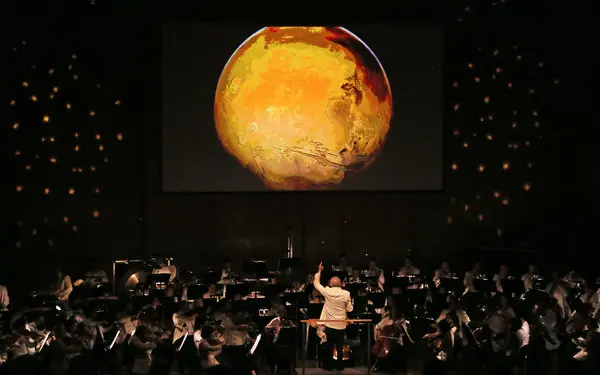
In “Jupiter, the Bringer of Jollity” from Gustav Holst’s The Planets Suite, the orchestration plays a crucial role in painting a sonic landscape that embodies the planet’s jubilant and majestic characteristics. Holst’s masterful use of the orchestra is evident in his selection and combination of instruments, as well as in his innovative techniques, which together create a dynamic and vibrant sound.
Instrumentation in “Jupiter”
Holst’s orchestration for “Jupiter” is rich and varied, involving a large symphony orchestra. This includes a full complement of strings (violins, violas, cellos, and double basses), a broad array of woodwinds (flutes, oboes, clarinets, and bassoons), and a diverse brass section (trumpets, trombones, a tuba, and French horns). The percussion section is notably colorful, featuring timpani, bass drum, cymbals, and triangle, which add rhythmic vitality and accentuation to the thematic material. Additionally, a glockenspiel and harp contribute shimmering, ethereal textures that enhance the celestial quality of the movement.
Use of Orchestra Sections
Strings: The string section provides a lush, warm foundation throughout the movement. Holst often uses the strings to convey the sweeping, melodious themes that are central to “Jupiter.” The violins frequently carry the melody, supported by rich harmonies and counter-melodies from the violas, cellos, and double basses. This layering not only enriches the textural depth but also enhances the grandiose and uplifting atmosphere of the piece.
Brass: Holst employs the brass section to grand effect in “Jupiter,” utilizing its powerful and resonant tones to underscore the movement’s regal and joyful character. The French horns and trumpets, in particular, play majestic fanfares that seem to herald Jupiter’s kingly status. Trombones and tuba add weight and depth, particularly in climactic sections, reinforcing the sense of grandeur and authority.
Woodwinds: The woodwinds add color and contrast, often interjecting playful and lyrical passages that lighten the texture and provide dynamic contrast to the more forceful brass and strings. Their role is crucial in moments of thematic development, where their distinct timbres help in differentiating the various motifs and in illustrating the more nuanced, introspective aspects of joviality.
Percussion: The percussion section in “Jupiter” is used sparingly but with great impact. Timpani rolls and cymbal crashes heighten the dramatic effect of the climaxes, while softer percussion instruments like the triangle and glockenspiel add sparkle and brilliance to the lighter sections, enhancing the overall sense of jubilation.
Notable Orchestral Moments
One of the most memorable orchestral techniques in “Jupiter” is Holst’s use of a broad dynamic range. From the thunderous, full-orchestra fortissimos to the delicate, whispering sections featuring solo woodwinds or strings, the dynamics are carefully crafted to reflect the emotional and symbolic themes of the movement. Another notable moment is the central, hymn-like theme played by the strings, later joined by the brass. This theme, which is both stately and serene, encapsulates the benevolent and generous spirit of Jupiter.
Melodic Elements
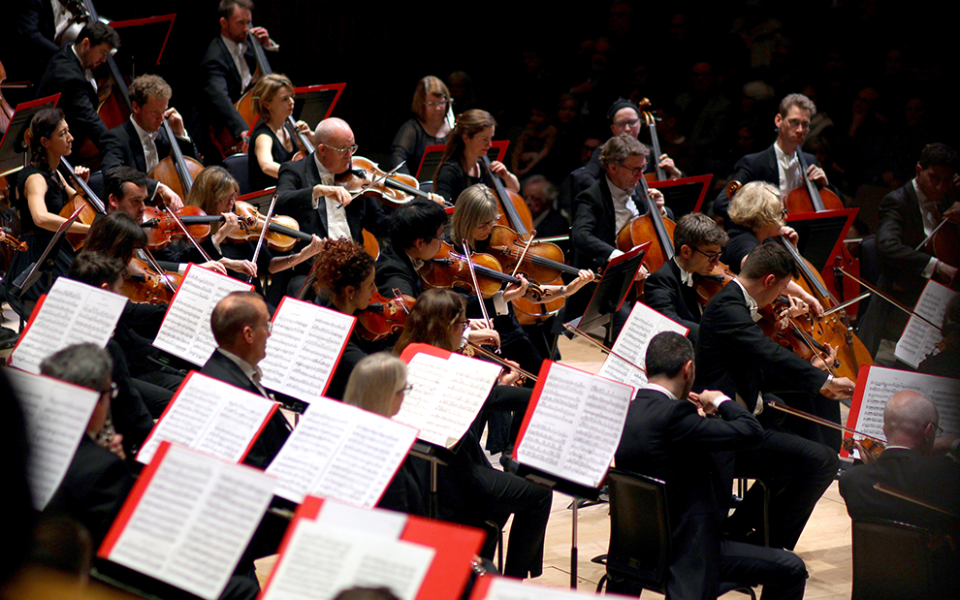
In “Jupiter, the Bringer of Jollity” from Gustav Holst’s The Planets Suite, the melodic elements play a pivotal role in conveying the planet’s character as both jovial and majestic. Holst’s compositional craftsmanship in thematic development and melodic contouring provides a profound insight into his ability to translate astrological concepts into musical narrative.
Main Themes and Motifs
Jupiter is characterized by several prominent themes that recur and evolve throughout the movement. The opening theme, introduced by the full orchestra, is bold and rhythmic, with a march-like quality that immediately establishes a tone of grandeur and celebration. This theme is marked by its robust, ascending lines and strong rhythmic drive, embodying the sense of a grand entrance.
Following the initial fanfare, a second theme emerges, often referred to as the “Jupiter” theme. It is lyrical, flowing, and distinctly more reflective than the first. This theme is best known for its later adaptation into the hymn “I Vow to Thee, My Country.” The melody is introduced by the strings, providing a warm, rich texture that contrasts with the brass-driven opening. It offers a more personal, introspective look at joviality, reminiscent of the benevolence and wisdom often associated with Jupiter.
Contribution to Mood and Depiction
The interplay of these themes within “Jupiter” creates a dynamic musical landscape. The initial, vigorous theme serves as a representation of Jupiter’s regal and public persona, full of energy and outward jubilance. It captures the listener’s imagination and evokes the image of Jupiter as a celestial king, presiding over a cosmic celebration.
In contrast, the lyrical “Jupiter” theme contributes a sense of serene majesty and deep joy. It is both uplifting and noble, reflecting the planet’s role as the protector and the bringer of peace. This melody, with its sweeping lines and emotional depth, adds a layer of grandeur that is both intimate and profound, suggesting not just the celebration of joviality but its sustaining, nurturing qualities as well.
Melodic Development and Narrative Significance
Holst masterfully develops these themes throughout “Jupiter,” allowing them to interact and transform. This thematic development is not just a musical technique but a narrative tool that Holst uses to convey the evolving nature of joviality and majesty. The themes are varied through modulation, instrumentation, and dynamics, mirroring the multifaceted personality of Jupiter.
For instance, the main themes undergo a series of transformations that echo the astrological symbolism of growth and expansion. The march-like theme reappears with different orchestration and in different keys, each time gaining more depth and complexity. This signifies the omnipresent influence of Jupiter, continually resurfacing in varied forms across the celestial and human realms.
The “Jupiter” theme also expands, moving from the strings to a fuller orchestral expression, culminating in a powerful, all-encompassing rendition. This progression from a quiet, introspective melody to a grand, communal declaration mirrors the astrological view of Jupiter as a guiding force towards greater understanding and harmony.
Harmonic Textures
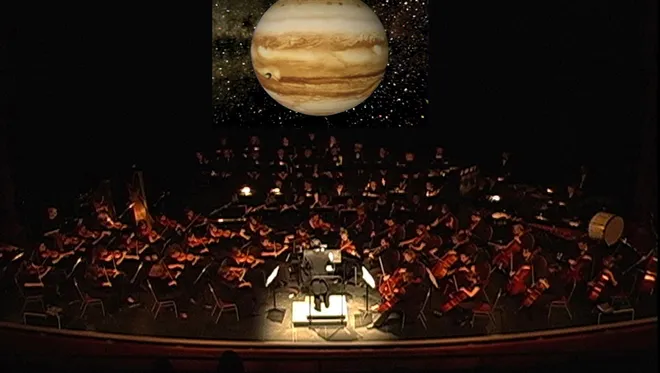
In “Jupiter, the Bringer of Jollity” from Gustav Holst’s The Planets Suite, the harmonic textures underpinning the music add layers of emotional and symbolic depth to the portrayal of Jupiter. Holst’s use of varied harmonic structures, including major, minor, and modal harmonies, skillfully enhances the themes of majesty and benevolence associated with the planet.
Harmonic Structure of “Jupiter”
The harmonic foundation of “Jupiter” is as dynamic and expansive as its melodic content. Holst begins the movement in C major, a key traditionally associated with heroism and jubilation, which sets a triumphant and exuberant tone from the outset. The use of C major throughout the piece anchors the listener in a sense of stability and grandeur, reflecting Jupiter’s astrological role as the king of gods.
However, the harmonic journey within “Jupiter” is not confined to a single tonal center. Holst introduces contrasts through the strategic use of minor keys and modal shifts, which add a rich, emotional complexity to the piece. For instance, the transition into E minor in certain passages introduces a momentary shadow, a slight melancholy that deepens the character of the movement without undermining its overall vitality.
Use of Major, Minor, and Modal Harmonies
Holst’s employment of modal harmonies is particularly notable in “Jupiter.” These are evident in the modal interchange and the use of the Lydian mode, which has a raised fourth scale degree. This mode brings an ethereal, almost mystical quality to certain sections, enhancing the celestial theme and providing a sonic representation of the expansive and benevolent nature of Jupiter.
The interplay between major and minor harmonies in “Jupiter” serves to depict the planet’s multifaceted attributes. Major keys dominate the jubilant and bold sections, driving the themes of optimism and grandeur. In contrast, the subtle use of minor keys adds layers of emotional depth, suggesting the more reflective and protective qualities of Jupiter. This harmonic diversity aligns with the astrological view of Jupiter as a complex entity, capable of bringing joy but also invoking contemplation and introspection.
Key Changes and Their Impact
The key changes in “Jupiter” are strategic and impactful, playing a significant role in the piece’s emotional trajectory. For example, the central, hymn-like theme in the movement is initially presented in G major, which conveys a straightforward, noble sentiment. As this theme develops and the key shifts—most notably to D major—the music takes on a brighter, more triumphant quality. This shift not only heightens the emotional intensity but also mirrors the narrative progression from personal reflection to universal jubilation.
Towards the climax of the movement, the return to C major from various exploratory tonal excursions symbolizes a return to strength and certainty, encapsulating the benevolent authority of Jupiter. This return acts as a musical reaffirmation of Jupiter’s enduring presence and influence, both celestially and mythologically.
Rhythmic Components
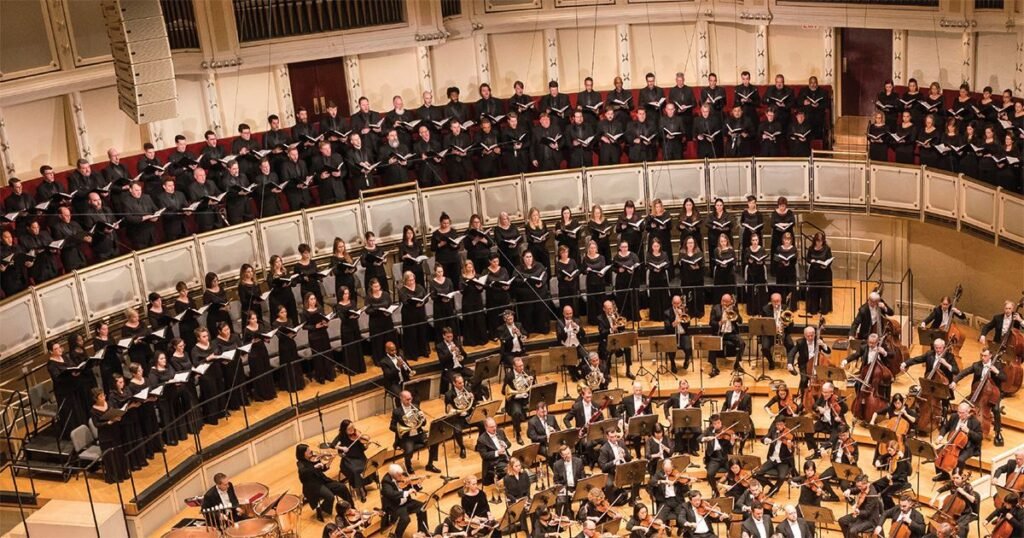
The movement “Jupiter, the Bringer of Jollity” from Gustav Holst’s The Planets Suite is rich with rhythmic complexity that significantly enhances the portrayal of the planet’s characteristics. Holst employs a variety of rhythmic patterns that not only complement the melodic and harmonic elements but also vividly contribute to the depiction of Jupiter’s majestic and buoyant qualities.
Analysis of Rhythmic Patterns
Holst’s use of rhythm in “Jupiter” is diverse and dynamically engaging. The movement begins with a robust, spirited motif characterized by its driving rhythm. This opening sets the tone with its vigorous pace and pronounced accents, effectively capturing Jupiter’s grand and authoritative nature. The rhythm here is predominantly marked by strong beats and a lively tempo, providing a foundation of energy and exuberance.
As the piece progresses, the rhythmic patterns become more varied and intricate. In the sections where the lyrical “Jupiter” theme emerges, the rhythm shifts to a more flowing and expansive pattern. Here, Holst employs a broader, sweeping rhythmic structure that allows the melody to soar, lending a sense of grace and nobility. This contrast between the vigorous opening rhythms and the smoother, more melodic rhythms helps to illustrate the multifaceted nature of Jupiter, highlighting both its power and its capacity for benevolence.
Holst also utilizes syncopation and hemiola to create rhythmic tension and release, which adds a playful and unpredictable element to the piece. These techniques are particularly evident in the transitions between thematic sections, where they serve to maintain momentum and interest, reinforcing Jupiter’s vibrant spirit.
Support of Melodic and Harmonic Elements
The rhythmic elements in “Jupiter” are carefully crafted to support and enhance the melodic and harmonic developments. For instance, the more stately and hymn-like sections are supported by steady, march-like rhythms that underscore the solemnity and dignity of the melody. Conversely, lighter, more whimsical passages feature agile and syncopated rhythms that align with the playful harmonies and modal shifts, emphasizing the jovial aspect of Jupiter.
Holst’s integration of rhythm with melody and harmony is seamless, ensuring that each rhythmic change enriches the overall musical texture and emotional impact of the movement. This synchronization allows the themes of majesty and joy to be expressed not only through notes and chords but also through the very pulse of the piece.
Impact on Portrayal of Jupiter
The impact of rhythm on the portrayal of Jupiter’s characteristics is profound. The majestic qualities of the planet are mirrored in the grand, bold rhythms that open and dominate much of the piece, conveying a sense of scale and authority. Meanwhile, the buoyant, lighter rhythms reflect Jupiter’s role as the bringer of jollity, infusing the music with a sense of optimism and vitality.
These rhythmic choices make “Jupiter” not just a piece to be heard, but to be felt. They evoke the physical and emotional response of jubilation and awe, drawing the listener into a celebratory dance that mirrors the celestial dance of the largest planet in our solar system.
Thematic Integration and Portrayal
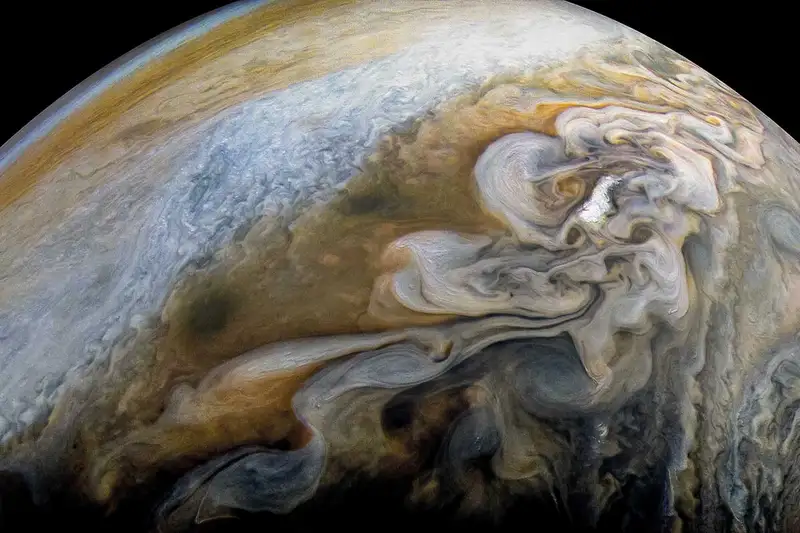
In “Jupiter, the Bringer of Jollity” from Gustav Holst’s The Planets Suite, the integration of orchestration, melody, harmony, and rhythm not only creates a rich tapestry of sound but also forms a vivid portrayal of Jupiter’s astrological and mythological essence. This section synthesizes how these elements combine to encapsulate the planet’s attributes of majesty, benevolence, and joviality.
Synthesis of Musical Elements
Orchestration plays a pivotal role in setting the tonal landscape of “Jupiter.” The use of a large, diverse orchestra allows Holst to explore a wide range of textures and timbres. The brass section, with its bold and powerful fanfares, underscores Jupiter’s regal and commanding presence, while strings bring warmth and depth, portraying the planet’s benevolent side. Woodwinds add color and a lighter touch, enhancing the portrayal of joviality, and percussion elements inject energy and grandeur, reinforcing the celebratory aspects of Jupiter.
Melody in “Jupiter” serves as the emotional core, with the principal themes offering contrasts between majestic fanfares and sweeping, lyrical passages. The famous central hymn-like theme, for example, conveys a noble tranquility and a sense of higher purpose, reflecting Jupiter’s role as the protector and the wise ruler. The melodies are crafted to be memorable and evocative, resonating with a sense of grandeur and emotional depth that is quintessentially Jupiter.
Harmony complements these melodies with a mixture of major and modal harmonies that enhance the planet’s luminous and optimistic characteristics. The harmonic progressions from major to minor modes, and the use of bright, resolute chords, provide a dynamic backdrop that shifts between moments of reflection and moments of exultation, mirroring Jupiter’s complex personality.
Rhythm adds vitality and movement, with varying patterns that highlight the different facets of Jupiter. The energetic, driving rhythms at the beginning establish a sense of authority and vigor, while more fluid and expansive rhythms in other sections evoke a more reflective or celestial mood, underscoring the themes of wisdom and joy.
Recurring Thematic Material Across Movements
Holst’s The Planets Suite is thematically cohesive, yet each movement maintains its unique character. Some of the musical motifs and thematic ideas introduced in “Jupiter” echo throughout other movements, serving as unifying elements within the suite. For example, the robust orchestral textures and dynamic brass motifs found in “Mars, the Bringer of War” are echoed in “Jupiter,” but are transformed to convey not aggression, but authority and cheerfulness.
The integration of these motifs across different contexts emphasizes Holst’s astrological narrative, where each planet contributes to a larger cosmic story. In “Jupiter,” these themes are presented with a particularly optimistic and generous spirit, which contrasts with the more sinister or mystical moods of other movements like “Saturn, the Bringer of Old Age” or “Neptune, the Mystic.”
Through this interplay of orchestration, melody, harmony, and rhythm, “Jupiter” emerges not just as a standalone piece but as an integral part of a broader sonic exploration of the solar system. This thematic integration allows Holst to craft a multifaceted musical depiction of Jupiter, capturing its essence as the king of planets and the bringer of jollity. The movement serves as a centerpiece in The Planets Suite, embodying the joy and grandeur that Holst envisioned in his astrological and musical journey through the cosmos.
